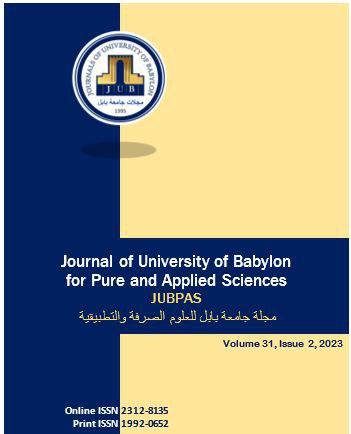The Use of Some Animal Wastes in the Control of the Pathogenic Fungi Fusarium Solani And Rhizoctonia Solani on Tomato Plants
Main Article Content
Abstract
Background: This study was conducted to evaluate the efficiency of animal waste in controlling seedling death and root rot diseases in tomato caused by the pathogenic fungi Fusarium solani and Rhizoctonia solani In open field conditions, which were isolated from the soil of different locations. singly or in combination with the bio-control fungus Trichoderma harzianum.
Materials and Methods: The fungal pathogens and fungi, Fusarium solani and Rhizoctonia solani, were tested and diagnosed, and the pathogenicity of the fungal isolates was tested. The resistance preparation was introduced, and the terrain ability was tested for it
Results:The results of the pathogenicity test showed that the isolates taken from the greenhouses / Hilla R. solani and F. solani had the highest percentage of seedling mortality after emergence, reaching 97.500 and 95.00, respectively.The interaction showed the antagonistic ability of the fungus Trichoderma harzianum against the pathogenic fungi R. solani and F. solani, achieving an antibody score of 2.25
Conclusion: The results of the aqueous extract of animal waste showed a significant reduction of the two pathogens R.solani and F.solani, where it reached the highest value at 4.100 when isolate F.solani for poultry extract and the smallest value was 8.300 when extracting cows, while all aqueous extracts did not affect the growth of the biofungus T. harzianum .It amounted to 8,900, 9,000, 8,925, and 8,925 (cows, sheep, horses, and poultry), respectively. The results of the laboratory isolation of animal waste showed the presence of (6) species of fungi.. Alternaria sp, Aspergillus niger, Penicillium sp, Trichoderma harzianum , macrohpomina sp , Cylindrocarpon sp
Article Details

This work is licensed under a Creative Commons Attribution 4.0 International License.
